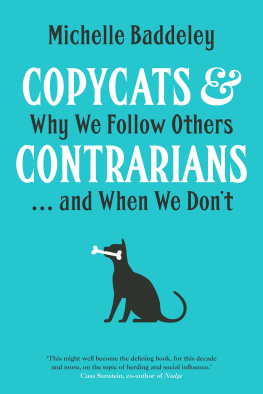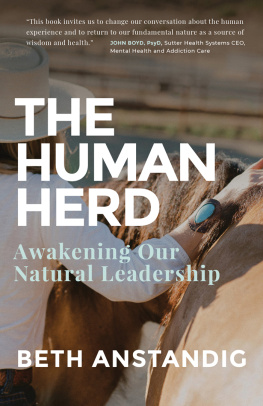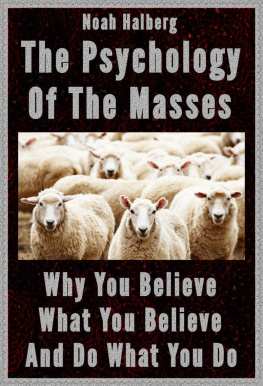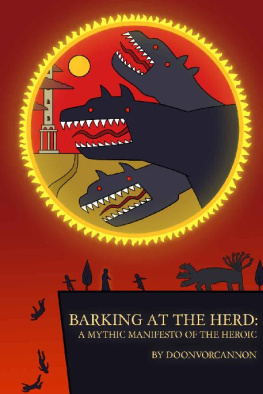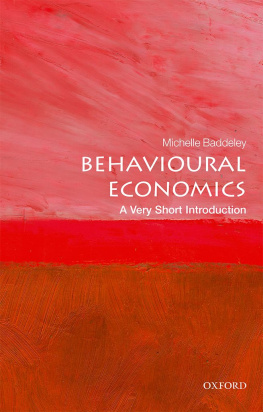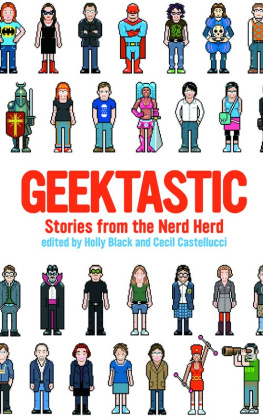COPYCATS AND CONTRARIANS

Copyright 2018 Michelle Baddeley
All rights reserved. This book may not be reproduced in whole or in part, in any form (beyond that copying permitted by Sections 107 and 108 of the U.S. Copyright Law and except by reviewers for the public press) without written permission from the publishers.
For information about this and other Yale University Press publications, please contact:
U.S. Office:
Europe Office:
Set in Adobe Caslon Pro by IDSUK (DataConnection) Ltd
Printed in Great Britain by TJ International, Padstow, Cornwall
Library of Congress Control Number: 2018940284
ISBN 978-0-300-22022-3 (hbk)
A catalogue record for this book is available from the British Library.
10 9 8 7 6 5 4 3 2 1
To my parents, with gratitude
Let us boldly contemn all imitation, though it comes to us graceful and fragrant as the morning; and foster all originality, though, at first, it be crabbed and ugly as our own pine knots.
Herman Melville, Hawthorne and His Mosses (1850)
Worldly wisdom teaches that it is better for reputation to fail conventionally than to succeed unconventionally.
John Maynard Keynes, The General Theory of Employment,
Interest and Money (1936)
Contents
Introduction
O n 6 September 1997, the funeral of Diana, Princess of Wales attracted a crowd of over 3 million mourners in London, as well as a worldwide TV audience of almost 3 billion. The metres-deep carpets of bouquets, poems, teddy bears and other sentimental offerings accumulating outside Buckingham Palace and Dianas Kensington Palace home gave the twentieth century some of its most iconic images. Millions of strangers expressed extreme if short-lived grief about the death of a person they had never met. Why did so many individual mourners feel deeply enough to join with millions of others in expressing their collective sadness? They joined together as a grief-stricken herd, coordinated around the globe by international news media. This powerful mass hysteria seemed as unreasoning as it was uncontrollable. But was it?
Our herding is not always histrionic. Our tendency to imitate, follow others and group together can be reasonable strategies to improve our lives and evolutionary life chances. Herding is an instinct we share with other animals too. Behavioural ecologists have observed clever copying behaviour amongst many of our close (and not so close) animal relatives.
Dianas mourners and the toad-smart quolls illustrate that, as social animals, we clearly have strong instincts to copy and conform, a pattern of behaviour that has helped many species, including our own, to survive and prosper. But this is only half the story. Humans are not conformists always and everywhere. There are plenty of rebels and contrarians, some of whom have changed lives and history. Socrates was a famous example: he was sentenced by a jury to death by hemlock in 399 BC as punishment for refusing to worship the gods revered by his fellow Athenians, for appearing to side with the Spartans, and for embracing a role as self-appointed critic and gadfly of the Athenian state. But while Socrates ended his life as an outcast, our intellectual history was transformed by his contributions. Similarly, our modern lives would be unimaginable if history had not delivered a wide range of different characters prepared to take maverick risks: from Copernicus and Galileo through to Darwin, Crick and Watson. Via careful thought and deliberation, these and other mavericks and mavens have led us down new paths, unimaginable and contentious at the time. The consequences of the risks they took with their reputations and social standing were profound in terms of transforming the length and quality of our lives.
Herding and anti-herding defined
What exactly is herding? And what is its opposite? The literatures on copycats herding is vast (though there is less emphasis on contrarians) and span a wide range of subjects and contexts. With such a diversity of researchers studying herding, a universal definition is likely to be elusive. But there are three common threads that unify conceptions of herding that we can observe in ourselves and other copycats around us. First, and most obviously, herding involves imitation. Second, it is a group phenomenon: someone imitating just one other person is not herding; many people imitating one person and many people imitating many people is herding. Third, herding may sometimes be driven by unconscious motivations, as we shall see, but it is not random. Conscious and unconscious forces encourage us to choose to follow groups in systematic ways. Pulling all these threads together, we can define herding as a systematic choice to copy others in a group. It may benefit the self-interested individual, or it may bestow a collective advantage if individuals are joining with their fellows to support the interests of groups and/or species.
Understanding herding copycats will also help us to understand the essence of their opposites: the contrarians. Contrarians are anti-herders, where anti-herding can be defined as a choice Anti-herding is not as dissimilar from herding as we might at first imagine. Anti-herding is a group behaviour, and it is not random; but it is the mirror image of imitation because an anti-herding contrarian acts against, not in concert with, the group. Further, anti-herding shares two of the three features of herding outlined above, but with a few twists. Anti-herding is often a group phenomenon because it does not concern behaviour that is random or orthogonal to the groups behaviour. Contrarians are not hermits. They worry what others think, but they may deliberately decide to oppose the herd sometimes by leading the group instead of following it. Like herding, anti-herding is systematic, not random, and perhaps it is more systematic if it is driven by deliberate, conscious choices. Either way, the actions of anti-herding contrarians and herding copycats can be complementary, in both good and bad ways.
Another key characteristic of herding is that it is social behaviour. We have evolved to be social animals, an evolutionary path that has instilled in us instincts to group together, reinforced by the social skills learnt during infancy and childhood. We trust and cooperate with others, even with strangers many miles away from us. We are often altruistic and philanthropic, even though our kindness to others reflects a complex mix of self-interest and generosity. It is a two-way interaction. When others are kind to us, we reciprocate. And when we reciprocate we build trust, and not only with our family, friends and communities. Most of our daily activities, including our economic activities such as work and shopping, would not be possible without trust and reciprocity. All these phenomena are linked to our more outward-looking and gregarious sides. Myriad experiments from psychology, neuroscience and behavioural economics have verified our strong social instincts, instincts that are shared widely across countries, cultures and other animal species, including our close primate cousins. What has this to do with copycats and contrarians? Copying, herding and imitating are another facet of our social nature, and our herding tendencies complement these other aspects of our sociality. Crowds of like-minded people will gather together, in a political protest for example, because they share a level of trust in each other and in the cause or leader that they are supporting. The same people would be as reluctant to join a crowd of opponents they do not trust as they are enthusiastic to join a crowd of people they do trust. Marketers and advertisers know well that if we can be persuaded that certain celebrities are trustworthy, then we can be encouraged to follow them by buying the products they endorse. Local and communal activities from cake sales to charity auctions are examples of how we bring together our desires to join a group with our generous and reciprocating natures.
Next page
